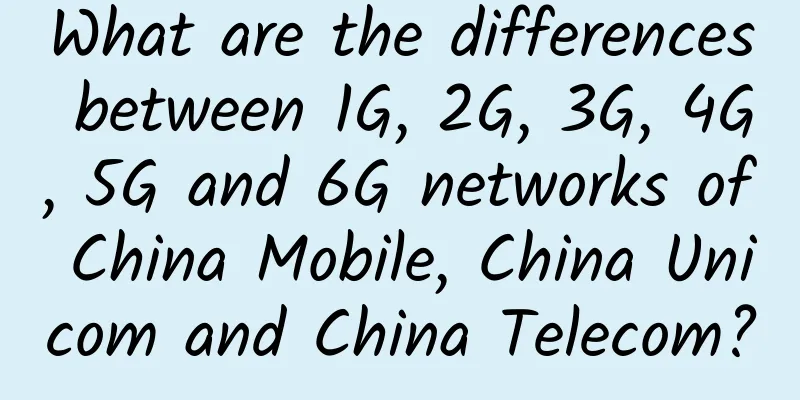A hybrid optical-electric cable solves the problem of intelligent manufacturing network layout

|
Manufacturing has always been the lifeline of the national economy. Since the reform and opening up, more than 40 years of development have transformed China into a manufacturing power. However, my country's manufacturing industry is still at the middle and low end of the international division of labor, and there are prominent problems such as being big but not strong. Improving quality and efficiency is imperative, and there is a long way to go for transformation and upgrading. The floating clouds in the sky are like white clothes, and soon they change into dark grey dogs. Under the guidance of the "14th Five-Year Plan for the Development of Intelligent Manufacturing", more and more manufacturing companies are undergoing digital and intelligent transformation. In this process, the requirements of manufacturing companies for network infrastructure are also constantly increasing. At a time when emerging technologies and advanced manufacturing are accelerating their integration, how can we build a solid and powerful network infrastructure to ensure the stable operation of enterprise networks, the efficient flow of data, and the continuous development of business? This is an issue that every manufacturing company must face on the road to transformation. Difficulties in network construction: barriers from "manufacturing" to "intelligent manufacturing"In September, Wang Jianwei, deputy director of the Information Technology Development Department of the Ministry of Industry and Information Technology, introduced at a press conference that as of the second quarter of this year, the proportion of my country's manufacturing enterprises that have achieved intelligent production is 6.6%. This shows that it is still a long way to go for most companies to move towards intelligent manufacturing. At present, the network problems faced by manufacturing companies are mainly concentrated in three aspects: 1. The massive growth of information points and data acquisition terminals has made the basic network structure complex. With the in-depth application of 5G technology and the gradual development of "Industry 4.0", "dark factories" that have achieved full process automation and intelligence have gradually emerged. The introduction of massive intelligent terminals has led to the complexity of the network structure. 2. The demand for rapid service provisioning and standardized management has increased. Since the outbreak of the epidemic, the concept of flexible production has gradually gained popularity. Smart manufacturing with flexible production characteristics allows companies to rebuild a personalized production line in a short period of time and promote rapid product updates and iterations. How to support this rapid iteration demand is a real test for enterprise networks. 3. Information security under the normalization of mobile office. Data leakage incidents occur frequently in office scenarios in manufacturing enterprises, such as untrusted applications used for office work, non-compliant access by various parties, employees accidentally clicking on phishing software, etc. How to ensure information security from the network level is still worth pondering. If the manufacturing industry is to move towards intelligent manufacturing, there will be higher requirements in terms of network performance, transmission distance, deployment, operation and maintenance, cost and other aspects. As the number of information points in production workshops continues to increase; as camera resolution is upgraded from 1080P to 4K and 8K; as the number of terminals connected to the intranet continues to increase under the trend of mobile office, these changes that consume a lot of bandwidth have posed a challenge to traditional Ethernet networks with copper cables as the main medium. The upgrade of transmission media has naturally become a consensus in the industry. The solution: the secret of a hybrid optical cableIn recent years, the concept of "optical fiber in, copper out" has been extended from home broadband to enterprise-level campus networks. "All-optical networks" that meet the characteristics of high bandwidth, low latency, and high speed have been recognized and accepted by more and more companies. It is undeniable that compared with copper cables, optical fiber has almost no bandwidth bottleneck and can smoothly evolve to hundreds of G. The wiring can be up to hundreds of kilometers long and can cover every corner of the campus, while the transmission distance of copper cables is limited to hundreds of meters. However, for manufacturing parks, optical fiber cannot completely replace copper cables. Optical fiber can certainly solve the problems of performance and transmission distance, but optical fiber made of glass fiber is an insulator and cannot directly replace the PoE power supply method of copper cable. A large number of devices such as video surveillance, wireless AP, access switches, etc. can only get power locally, which increases the difficulty of deploying wiring, point expansion, weak current room equipment management, and power safety. What the manufacturing industry needs now is a basic network that can not only give full play to the powerful performance of optical fiber, but also ensure power supply coverage, point expansion and operation and maintenance experience, so as to adapt to the network needs in different scenarios. In response to this new demand, Ruijie Networks, an ICT infrastructure and solution provider, has provided a new solution - optical-electrical hybrid cable . The so-called optical-electrical hybrid cable integrates optical fiber and copper wire into one cable. Data can be transmitted at a high rate and over long distances through optical fiber, and power can be supplied over long distances through copper cables, avoiding local power supply. In this way, the goal of taking the best of both worlds and using one cable for two purposes is achieved. The use of copper cable PoE power supply still cannot get rid of the attenuation dilemma of 100m, while the optical-electrical hybrid cable used by Ruijie can support PoF (Power over the Fiber) power supply. The 2.5mm² cable can support power supply up to 2.5km away. Combined with the network transmission distance of optical fiber far exceeding that of copper cable, it can be said that information points can be "pointed to any place". According to the internal production, office and office scenarios of manufacturing enterprises, Ruijie Networks has launched innovative optoelectronic integrated products - frame-type time host RG-S7808C-V2 and box-type time host RG-S5750-DP series. The time host series supports the integration of power supply/optical fiber transmission for various models of remote modules, covering comprehensive business scenarios; it can realize long-distance centralized power supply and continuous network connection during power outages; centralized deployment reduces the number of weak current rooms and network cables, effectively solving problems such as the difficulty of multiple control between weak points. It is reported that the multi-form design of the optoelectronic integrated series switches is aimed at different application scenarios in intelligent manufacturing.
In addition, in order to cooperate with the enterprise campus simplified Ethernet all-optical network solution V2.2, Ruijie also launched the optoelectronic integrated simplified optical indoor switches RG-IF2920 series and RG-PF2920 series to match the network deployment requirements in different enterprise scenarios. Ultimately, the research and development of new product functions and the design of various specifications are all based on Ruijie's spirit of continuous improvement. Each iteration and upgrade is based on the actual needs of users, which runs through the design of all generations of minimalist optical solutions and products. R&D Journey: Simplified Ethernet All-Optical Network from 1.0 to 2.2In March 2021, in response to the growing market demand for all-optical networks, Ruijie Networks released the Simplified Ethernet All-Optical Network 1.0. This carefully crafted and long-prepared solution provides a new path for enterprise network upgrades. Since then, Ruijie Networks has made a new upgrade on this basis, and for the manufacturing industry, Ruijie has launched an adaptive optoelectronic integrated solution - Enterprise Campus Simplified Ethernet All-Optical Network Solution V2.2 (hereinafter referred to as "Simplified Optical 2.2"). Enterprise Campus Simplified Ethernet All-Optical Network Solution V2.2 - Panorama Compared with version 1.0, what are the hardcore upgrades of the new generation of minimalist optical 2.2? Have its core R&D requirements changed during version iteration? Based on which pain points did the R&D team design relevant products in a targeted manner? Gao Zhen, product director of Ruijie Networks' switching and routing product division, introduced the story behind it to reporters. Gao Zhen mentioned that compared with the previous generation of solutions, Minimalist Light 2.2 has made key innovations in two major aspects. First, the software and hardware design of the product is more in line with the needs of segmented scenarios in the manufacturing industry. In terms of hardware, in addition to launching new products, the practicality and cost-effectiveness are improved, and the original product series is improved to be more adapted to the needs of optoelectronic integration. At the same time, in terms of software, more attention is paid to the refinement and intelligence of operation and maintenance management. Optoelectronic integration is not only physical integration, but also integration at the equipment and cable operation and maintenance level. While continuing the intelligent operation and maintenance of 1.0, such as "zero configuration online", "zero configuration replacement", "loop self-healing", and "optical link detection", Minimalist Optical 2.2 adds functions such as "optical-electrical integrated operation and maintenance" and "dumb terminal intelligent identification" to minimize the pressure on the operation and maintenance management level. Secondly, in terms of network architecture, Ruijie believes that campus networks will move towards "LAN-WAN convergence" in the future. "Since there are many types of campus routing and switching solutions, the solutions are actually isolated from each other. If multiple solutions are adopted at the same time, it is easy for users to form a 'solution chimney', resulting in isolation between each sub-solution. In the future, we hope to provide more end-to-end solutions." Moreover, driven by the development of mobile office, Internet of Everything, and IPv6, the boundaries between LAN and WAN are becoming blurred. Realizing unified management of LAN/WAN, thereby reducing management costs and improving overall network efficiency, is the future development direction of campus networks and the research direction of manufacturers. Although there are many innovative designs in the new generation of solutions, Gao Zhen emphasized that, in general, the core R&D needs are consistent, that is, always customer-centric and help them reduce costs and increase efficiency. "Help customers identify unnecessary points in network construction and streamline them, such as cabling construction. No matter how much money is spent on these links, it will not have any substantial benefit in improving network quality. On the contrary, if more investment is made in bandwidth upgrades, latency reduction, etc., the effect will be immediate." Rooted in industry scenarios: Our technological dreams will eventually be within reach"Rooted in the industry and deeply involved in the scenarios" has always been the philosophy that Ruijie Networks adheres to in its R&D and innovation. The application of the Minimalist Optical 2.X solution in the manufacturing industry is a perfect interpretation of this. In production scenarios, traditional solutions often face challenges such as difficult construction and long cycles due to changes in information points, and large cabinets in key workshops need to be independently deployed with UPS power supplies, which is costly. With the minimalist optical 2.X solution, the Time Host uses a hybrid optical cable to uniformly power various types of equipment, reducing the cost of UPS deployment; optical fiber to access switches, the cost of adjusting wiring and disconnecting wiring in the future is further reduced; and the connectivity status of various terminals is managed visually in terms of management and control. In the warehousing scenario, due to the limitation of the warehousing environment, the warehousing switches in the traditional solution are usually deployed on high-altitude bridges, which are difficult to maintain at high altitudes. In addition, the wiring is greater than 100M, and additional PoE switches need to be deployed, which has high overall costs and low line utilization. However, with the minimalist optical 2.X solution, the time host is uniformly managed, and there is no high-altitude operation; AP virtualization, zero-roaming AGV/PDA with the same frequency will not be disconnected; all-optical warehouse deployment saves at least 60% of warehouse PoE switches. In office scenarios, there are many information points on each floor, traditional wiring is inflexible, there are many weak-current rooms, and the management cost is high. In addition, business visits are frequent, wireless users are difficult to control, and security policies change frequently. The minimalist optical 2.X solution uses optical fiber into the room, significantly reducing wiring and weak-current rooms on the floor; full optical access, no need to re-wire for business expansion; integrated design of switches and weak-current boxes, easy to install; SDN controller automatically adapts, identity, and network security policies without manual intervention. In these application practices, we can find that network infrastructure is not only the "blood vessels" for data flow for manufacturing companies, but also the "neural network" that supports production, manufacturing, warehousing and logistics, and R&D and design. Ruijie Networks is based on the difficulties in network layout in the manufacturing industry, seeking a way out of the dilemma of optoelectronic integration, striving for innovation in R&D, and improving product design. Ultimately, the simplified Ethernet all-optical network solution has been refined in practice, optimized in scenarios, and verified in the industry, providing strong support for accelerating the innovative development of intelligent manufacturing. |
<<: Why can't I decrypt with the public key when I encrypt with the public key?
>>: What are some use cases for network automation?
Recommend
The operational direction of data centers in the "Internet +" era
In the era of "Internet +", the rapid d...
Talking about China's communications industry: from "seven countries and eight systems" to the backbone of "China"
Salute to China's communications industry, Hu...
CrownCloud: $5/month-4 cores/2GB/30GB/2TB@1Gbps/Los Angeles & Miami & Atlanta & Netherlands data centers
CrownCloud is a foreign hosting company founded i...
Tragicservers: $7/year OpenVZ-128MB/10GB/500GB/Los Angeles
It has been more than a year since I shared the n...
BandwagonHost: DC9 triple-network CN2 GIA line replenishment annual payment of US$74, 2.5-10Gbps bandwidth CN2 GIA quarterly payment starts at US$46.7
The DC9 triple-network CN2 GIA line host of Bandw...
China Construction Information: Friends of Huawei, with friends Huawei
If there is one common demand among governments a...
The challenges of 5G have just begun
The COVID-19 outbreak that has ravaged the world ...
5G: What it means and why we'll never need 6G
The launch of 5G isn’t all that far away, with ro...
5G plans of the three major operators in 2020
So far, the three major operators have released t...
What have the three major operators done to prevent and control the epidemic?
On February 14, the Ministry of Industry and Info...
CMIVPS updated pricing, US/Hong Kong VPS monthly payment starts from US$6/annual payment 30% off
I have shared information about CMIVPS many times...
The Ministry of Industry and Information Technology held a special meeting on 5G/6G technology
On May 12, the Ministry of Industry and Informati...
KVMLA Japan/Singapore dedicated server monthly payment 30% off, 595 yuan/month E3-1230v3, 16G memory, 480G SSD, 20M bandwidth
KVMLA has launched a special promotion for dedica...
Wireless WiFi network password cracking attack and defense and principle detailed explanation
Everyone must have had this experience: the wirel...
Fearing that 5G deployment will affect aviation safety! US aviation agencies and telecommunications agencies are in dispute
Although 5G (fifth-generation mobile communicatio...









